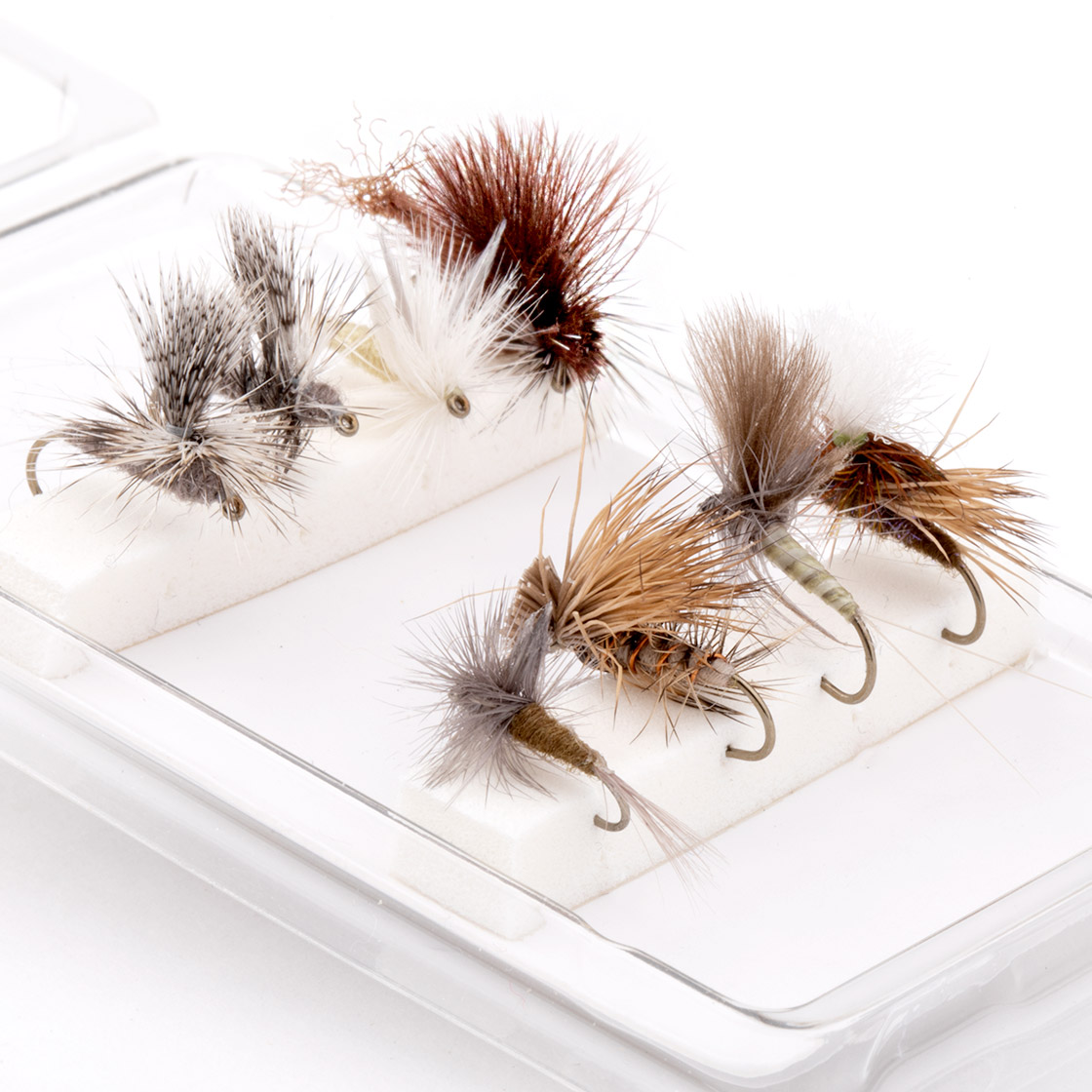21/12/2020
Top 10 Dry Flies for Trout
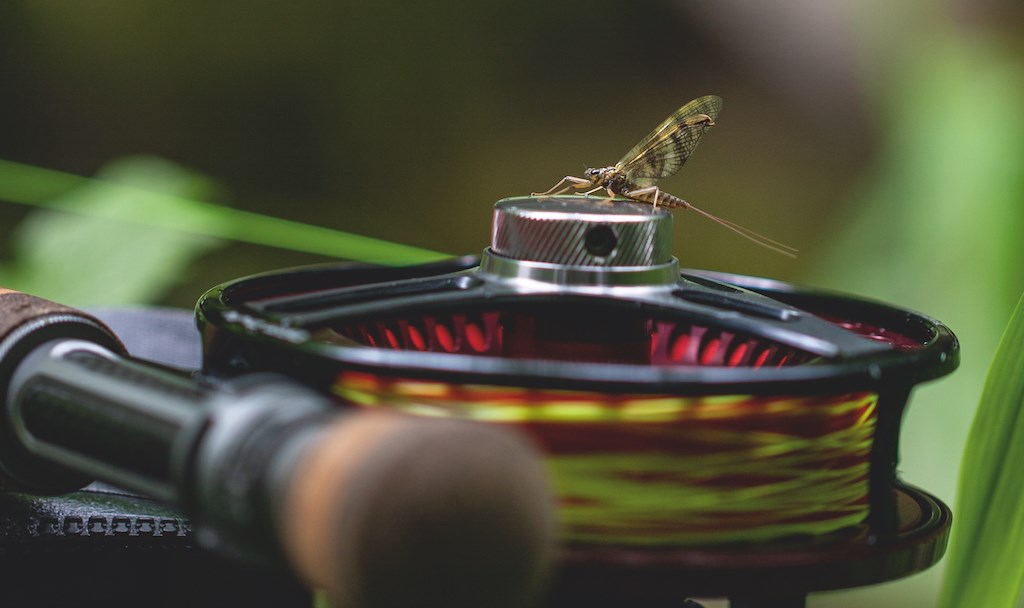
May and June are specials months for fly fishers here in Germany. Because now the big Danicas hatch in many waters and big brown trout rise to the surface, which otherwise can only be catched with nymphs or streamers. But not only the big mayflies ensure that now is one of the best times for the dry fly. Many smaller mayfly species as well as various caddisflies and stoneflies are also found more frequently along the trout river and quickly become the helpless prey after rising through the water column or during egg laying.
We have taken a close look at our large selection of dry flies and have put together 10 favourites for you for the coming weeks.
- When the big mayflies hatch and dance over the water, patterns like this are very successful. Details are not so important. What is important, however, is that size (hook size 10 or 12), shape (long body) and tint (light) are right. Which material the body is made of and which feathers or fur are used is less important. But make sure that the big dry fly really swims. For fast water we recommend a wing made of rough deer hair or a tight hackle. For even flowing streams a CDC feather is very suitable too.
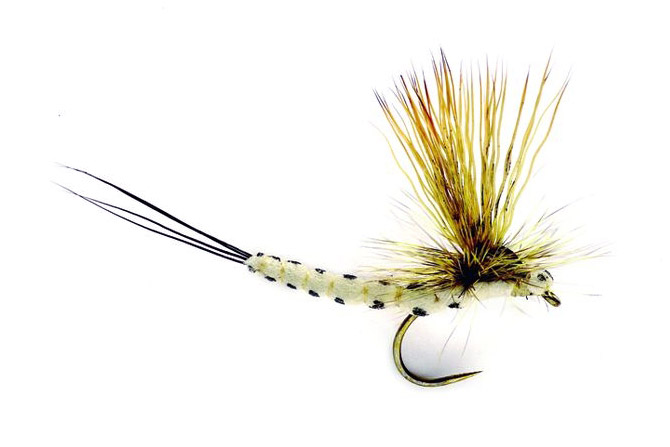
- If it has to be a little finer, then the mayfly patterns by Marc Petitjean are highly recommended. They are typically tied with CDC feathers (Cul de Canard) and can be presented very gently. Patterns with spread wings (split wings) are very suitable to imitate flies laying eggs or spents that sit deeper in the film and drift motionless. Especially very selective fish can often be outsmarted with these flies.
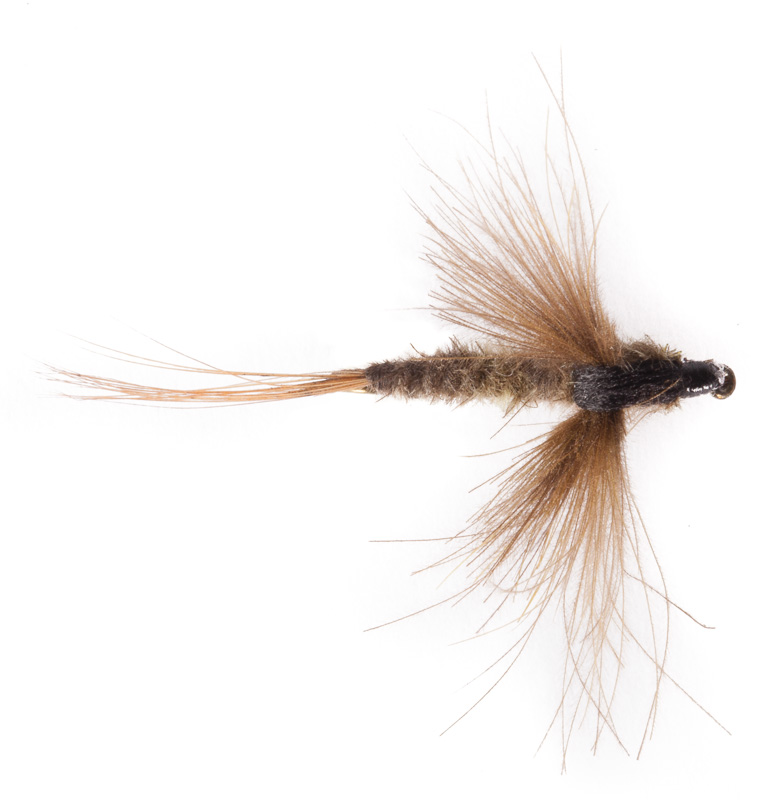
- Also a few smaller mayfly samples may not be missing in the fly box now. Best suited here are group patterns that imitate a whole range of different species. The hook sizes 14 and 16 and even 18 are the first choice when trout react selectively to small mayflies. A simple body and a wing made of CDC are sufficient to create a catching pattern. Only the body colour can be adjusted - from yellow and olive to brown and black. A simple but very effective dry fly for steady currents.
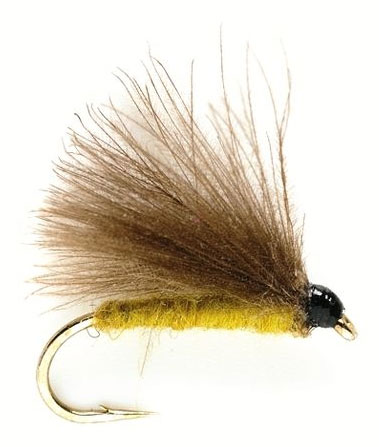
- Sometimes it can be observed that the trout do not break through the surface completely with their mouth. Also the ring does not form so strongly. Then is the perfect time for an emerger. These patterns sit very deep in the film and only the wings of the fly are visible to us. So a trained eye is needed here. Simple patterns with a body made of dubbing and a wing made of CDC or deer hair are perfect (if the water is a bit more turbulent). With these patterns it is very important that only the wing is greased, the body sits in the surface film. That is why hooks with a large gap/bend are often used. As an alternative to patterns like this, a sparsely tied Klinkhammer can also be fished.
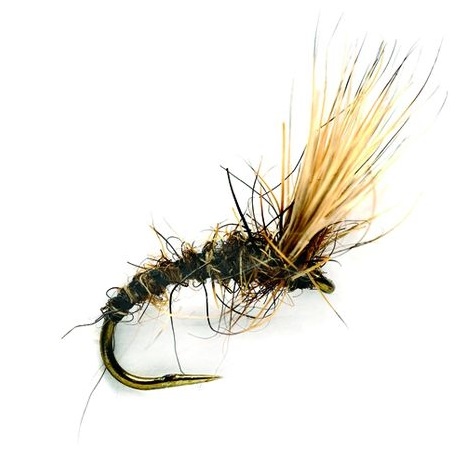
- Parachute patterns have two advantages: The body sits deeper in the water and yet the fly is still clearly visible - due to a post made of Antron or other materials. In contrast to classic emergers, however, the parachute swims much better because it has a tight horizontal hackle that lies flat on the water. Again, of course, only grease the wing. The body sinks into the water. The remaining fat can be put into the fine tail threads. A very effective pattern when mayflies of different species hatch. It is best to always have a selection of different sizes and colours in the fly box. And if you can't make up your mind, then maybe the classic one is right for you: the Adams Parachute. It imitates pretty much everything :)
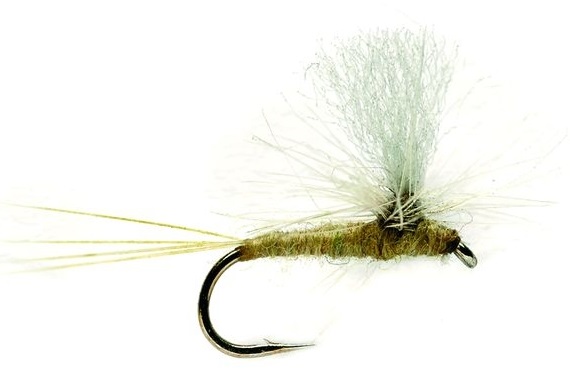
- Different Beatis variations can be found in almost every body of water. These medium-sized mayflies hatch very early in the year and almost all season. They can be tied with a cock hackle but also with CDC. The choice of material for the wing depends (as so often) on the speed of the current and whether the river glides smoothly or the water surface is broken up by many stones.
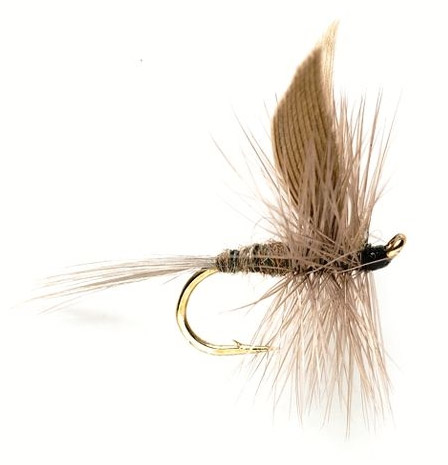
- Caddisflies are particularly common on rivers with a rocky bottom. These waters are on average faster than those rivers that have a primarily sandy sediment. However, a selection of caddis flies belongs in every fly box in one way or another. And the Goddard Sedge is our first choice when the water is more turbulent and the fly has to swim very well. Their body is tied from deer hair, which drifts very high on the surface. Not the most discreet pattern, but a guarantee in fast water. The Goddard can be presented in many different ways. Either in dead drift or sliding over the surface. For this it is usually presented downstream to the other bank and then pulled under tension from the water to its own bank. This creates a "V" in the water, imitating the attempt of a caddis fly to escape to the shore. Especially in the evening hours very large brown trout can be attracted to the surface. Absolutely spectacular! A tip: Should your leader twist, you can simply switch off the two antennas. This has no negative effects on the performance of the Goddard.
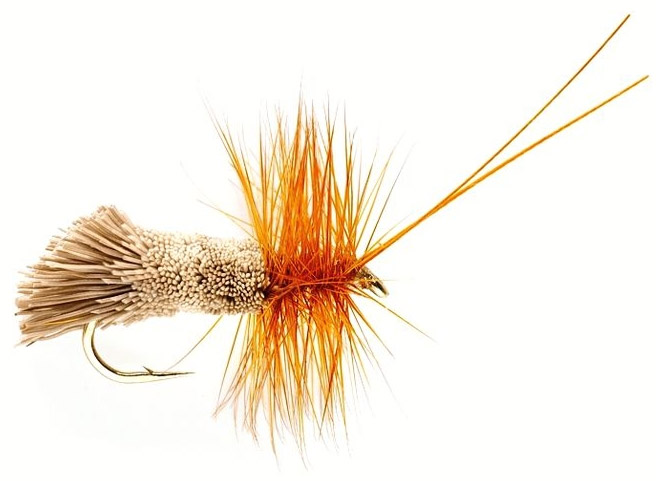
- One of the most popular patterns for imitating stoneflies is the stimulator. Like the Goddard, this pattern is a real permanent swimmer due to the tying materials used and is therefore very popular on fast rivers with uneven currents. This dry fly is also very well suited as a bite indicator and carries a nymph without any problems. Presented under trees this pattern often attracts large brown trout. A real search fly and a guarantee for aggressive bites!
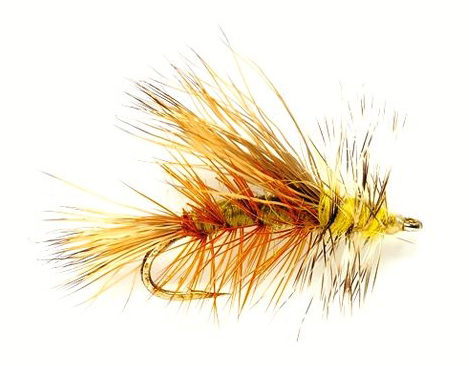
- Swims well, catches well and is clearly visible! A medium sized caddis with a wing made of deer hair, a hackle from the rooster and a post made of colored Antron. One of the best all-round patterns for stony waters and a guarantee for great dry fly fishing for active trout. Because of the visual aid, patterns like this one from Soldarini (Italy) are also very good as bite indicators.
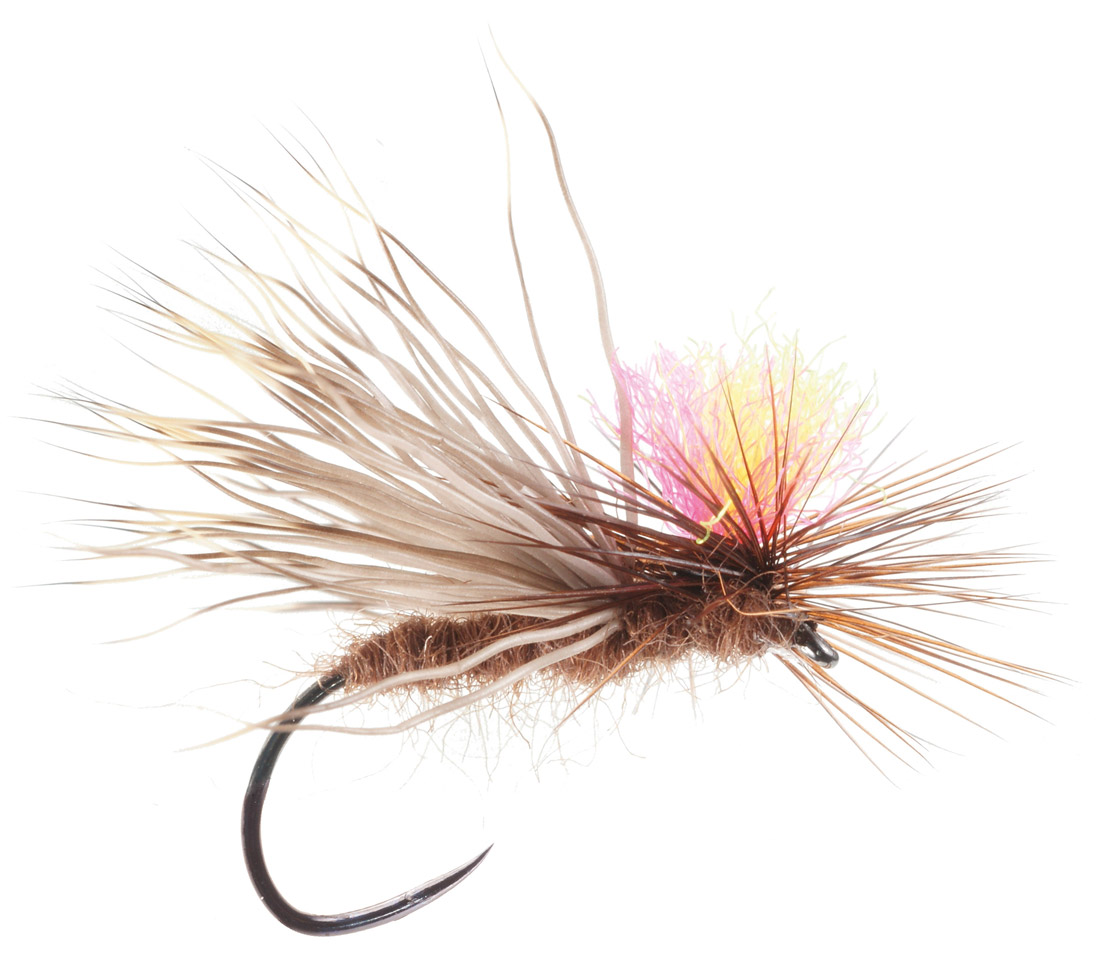
- In addition to these samples we can recommend our specially composed fly sets. Here we have put together proven patterns for different scenarios and only selected flies that we are 100% convinced of. In our fly sets you will find all-round patterns that depict different groups: Mayflies, caddis flies but also e.g. land insects. Have a look!
